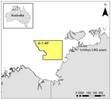Kenya’s offshore oil and gas sector has remained underexplored even as the country remains optimistic of making a breakthrough in the search for more hydrocarbons based on recent growth of its upstream operations.
The agreement signed last July that would see Qatari state enterprise Qatar Petroleum acquire 13.75% and 11.25% from Eni and Total respectively, in three deepwater exploration blocks of L11A, L11B and L12 blocks in the Lamu basin, signals a major step in Kenya’s drive to expand its offshore exploration program and confirming availability of investment opportunities for international hydrocarbons explorers and producers.
Furthermore, the assurance by Kenya’s Ministry of Petroleum Principal Secretary Andrew Kamau this week that the approval of the offshore blocks deal between Qatar Petroleum and the two oil majors will be given approval by government, could be an expression of the country’s readiness to tackle hurdles that have constrained it from realizing the dream of transforming itself into one East Africa’s oil and gas exporters especially after achieving the milestone of selling the first batch of its 200,000 barrels of sweet light crude to the international market a few weeks ago.
It is also not lost on some Kenyans the entry of Qatar Petroleum in Kenya’s offshore blocks comes at a time when the East Africa country is still grappling with difficulties in attracting capital for oil and gas exploration and production activities which the Ministry of Petroleum and Mining admits “are highly capital intensive”.
Elsewhere, the Ministry of Petroleum singles out the prohibitive cost of deploying new technology, inadequate primary technical data in some of the country ‘s offshore exploration blocks and the unresolved concerns about the weaknesses Kenya’s upstream regulatory framework and production sharing contract (PSC) model, as some of the challenges the government is wrestling with to attract more investment in the country’s oil and gas exploration and production.
Moreover, there are concerns on the viability of the future of current provisions in the Petroleum Act on the sharing of revenue from Kenya’s extractive industries and implementation of local content requirements by international oil and gas exploration and production companies keen on investing in Kenya’s upstream space.
Although the assumption by the government has been that the Act addresses the concerns of communities and County governments where the oil and gas blocks are located, previous experience have indicated a possible underlying dissatisfaction on the adequacy of the provisions in the Act to create harmony in the country’s oil sector.
For example, the May 2018 consensus reached by the National government and the County government of Turkana on Petroleum (Exploration, Development and Production) Bill of 2018, and which allows the national government to take 75% of the revenue accruing from oil sales from the South Lokichar development by Tullow and its partners leaving the Turkana county government and local communities with 20% and 5% respectively.
A subsequent Extractive Sector Forum held in Turkana county saw local community leaders reject the sharing formula and instead insisted on implementation of an earlier one in which the national government, county government and local communities were allocated 70%, 20% and 10% of the oil revenue share. The issue has not satisfactorily been resolved.
Whereas it is not clear how the communities around the Lamu offshore blocks will respond to the anticipated increase in oil and gas exploration, discovery and subsequent hydrocarbons production, the Turkana case is a pointer to the need for review of the emotive revenue sharing scheme to the satisfaction of local communities, County governments and National government if Kenya’s oil sector is grow.
Meanwhile, the entry of Qatar Petroleum into Kenya’s offshore petroleum play, is expected to help the country improve on the current low oil and gas well density, currently estimated at one well per 12,500 sq km based on the 56 exploration wells drilled so far within the four sedimentary basins of Anza, Lamu, Mandera and Tertiary Rift.
“There is need to increase (exploration wells) in order to discover hydrocarbons since some of the world’s known economical reserve pools occupy as little as 50 to 150 sq km,” said a previous draft report for the Strategic Environmental and Social Assessment Kenya’s Petroleum Sector.
“The probability of discovering oil in the country is higher because current data acquisition and interpretation techniques are much more advanced than before,” it said.
“Emphasis is being placed on acquiring in-fill data in sparsely mapped areas and zones with known poor data quality,” the report added.



